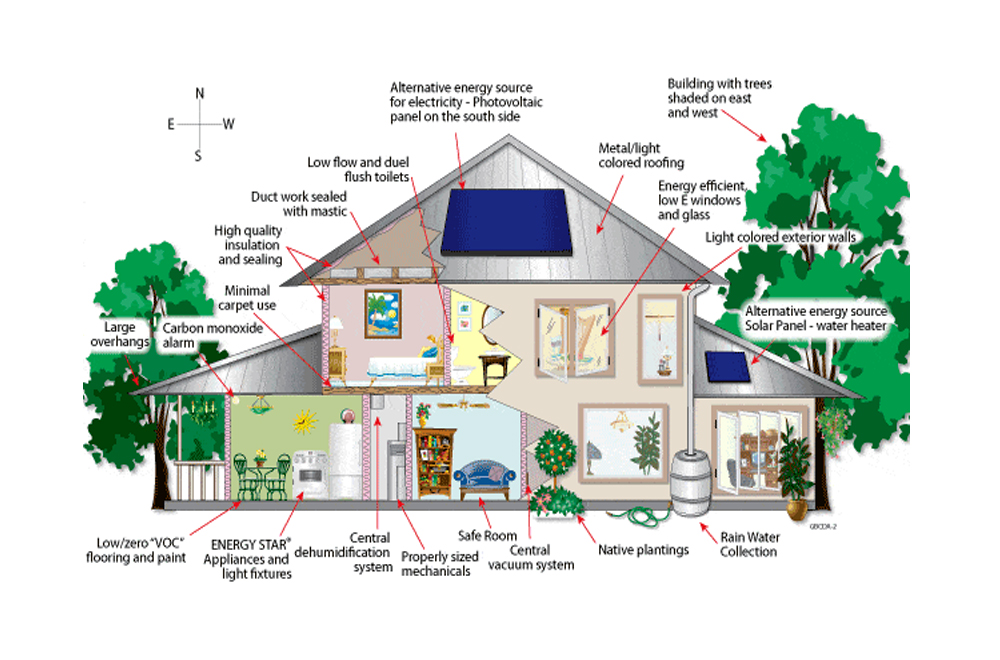So you want to fire “the man” and be your own boss in construction? Congratulations! You’ve paved the way to being the master of your own destiny. Owning a business can be challenging, and you’re taking on significant risks. However, this also allows you to enjoy the fruits of your success through increased income.
Unfortunately, being in the construction business can be especially challenging. Construction companies have among the highest five-year failure rates. This isn’t surprising, given the cyclical nature of construction, a high amount of overhead expenses, and thin profit margins. To increase your chances of success, it’s important to stay ahead of industry trends and use proper business management techniques. By following these steps, you can ensure everything is legally compliant and boost your chance of success.

Table of Contents
ToggleStep 1: Perform Market Research
Before committing any resources to starting your businesses, it’s important to know the lay of the land in your area. Although the construction industry in general is highly competitive, not all areas have a sufficient supply of contractors in each niche. Additionally, it’s possible that your area needs increased competition because of weaknesses in the market. By doing your homework, you can identify opportunities and threats.
What Areas of the Market Are Over Saturated?
In many markets, there’s going to be an oversupply of one contractor type or another. For instance, your area might be experiencing a surplus of roofing contractors. This might be an issue because most of the housing stock in certain neighborhoods was built in the sixties and needed new roofs. Now, with the roofs replaced there is too much competition. Starting a new roofing business in this situation would be a bad idea and place you at high risk of failure.
What Opportunities Exist?
On the other end of the spectrum, some construction types might be experiencing a severe shortage. Maybe there’s plenty of retail and office space, but housing is in short supply. If there’s plenty of buildable land available, and if people are purchasing building lots, then this might be an opportunity. Alternately, you might find that home renovation is hot, and people are waiting a long time to get on contractor schedules.
What is the Local Regulatory Climate?
Construction is a heavily regulated industry nationwide. Depending on the location, you might have to meet certain education or experience requirements to get a contractor’s license. Or, you may need a certain level of financial stability. Some areas even require that the owner of a contracting firm pass a criminal background check. In other words, it’s important to know you’re licensable in the areas where you hope to work.
Step 2: Start Networking and Seek out Mentoring
Another part of advanced planning is getting to know some good people. Great businesses aren’t built overnight, and it’s hard to do it without the right advice. If you’ve worked as a foreman at another construction company, you might already know some of your fellow tradesmen. However, expanding your network is still beneficial.
Meet Other Contractors
This one might seem counterintuitive. After all, you might be building relationships with a future competitor. However, you can always learn from other people’s success, and you never know when someone else’s complementary services or talents can be useful. For instance, you might be working on a house sometime and find you need a custom woodwork specialist. Or, your regular plumber might be on extended sick leave. In both of these cases, you can draw on your network.
Get Business Mentoring
Your other people-related task at this stage is to seek out mentoring. This can be found in several places depending on your situation. For instance, there’s a service called SCORE from the Small Business Association. They’ll help you navigate many of the steps required to form a legal entity and get set up. After that, you can turn to them for advice and further training. Other options include your local small business alliance or chamber of commerce. Women and veterans often have additional resources available. The great thing about all of these resources is that they aren’t competitors, and they’ve often seen everything.
Step 3: Develop a Business Plan
No matter what options you choose, the business plan is your most important document. Along with financial statements and credit, your business plan is what helps get any loans you need to start up. Later in the process, it will also help attract investors as appropriate to your business model. With that in mind, what’s in a good business plan?
Executive Summary
This is a one or two-page summary of everything else that’s in your business plan. A bank or investor can read it and decide if digesting the rest of your plan is worth their time. It’s also your best shot at a good first impression, on paper at least.
Corporate Structure
Are you forming an LLC? A corporation? Partnership? Who are the owners of your company, and what business partners do you have (if any). To what extent are you hiring employees or using subcontractors?
Target Market
Here, you’ll talk about the kinds of projects you intend to bid on. So, you may specify that your ideal project is a custom, single-family home. Then, if you have problems getting enough work in that niche, remodeling houses or building small apartment buildings. Whatever your niche, be sure to mention it.
Market Conditions
In this section, you’ll talk about the conditions in your local construction market. This can focus on your chosen niche, though you might also compare it with other options. Here, the example from above would be describing the roofer oversupply and how new home construction can’t happen fast enough. Overall, you need to demonstrate that your business is needed in the market and that you have chosen a profitable specialization.
Initial Funding and Revenue Projections
Next, you’ll talk about how your business will be paid for initially. This includes the amount of cash needed to acquire equipment, pay government and professional fees, and pay the upfront costs of your first contract or two. For most businesses, this is going to be a mixture of startup loans and personal funds.
Revenue projections are the next item. This means predicting where your business will be after six months, a year, two years, and up to five years. Banks and potential investors need to know how much money you expect to make, and how you intend to get there. It shows that you know how to increase business revenue or how to be profitable, and that your expectations are reasonable. Plus, this is something you can hold yourself accountable for.
Marketing Plan
Plans are great, but without marketing you don’t have much chance of getting there. After all, businesses need customers. To that end, any business needs to have a marketing plan. Since a failure to plan is often a plan to fail, you need to outline how you are going to market your business. Not only does this let you think about ways of getting the word out, but it also gives your mentors a chance to give suggestions.
Leadership Profiles
How often have you gone to a business website and clicked on the “about me” page? Chances are, fairly often if you need professional services. Construction consumes a lot of financial resources, and there are significant safety issues on top of it all. Potential customers want to know that you are competent in your field. Likewise, bankers and potential investors need to know you have what it takes to succeed. The profiles are a great opportunity to inspire confidence and shouldn’t be missed.
Step 4: Ensure You Have Money for Paperwork
Your next step is making sure that you have enough money to get your business entity set up as outlined in your business plan. These fees can vary, depending on the organizational structure you’ve chosen. In addition, meeting state and local requirements for becoming a contractor can cost thousands of dollars. Finally, you may need to pay out legal and accounting fees. Your mentors can help you determine how much this will cost and find ways to raise the cash.
Step 5: Form and Register Your Business Entity
With all the planning behind you, it’s time to take those blueprints and break ground on your new business. Building the foundation involves creating the legal entities needed to operate and registering them at the federal level. Typically, you’ll need to do this before proceeding any further. Here are some options.
Sole Proprietor
This is the simplest type of business, in which you pay income taxes through your own return. It also means that the business profits, assets, and liabilities are yours alone. If something goes wrong, you could get sued and lose everything.
With sole proprietorships, there are two optional steps you can take. The first is registering a DBA, or “doing business as.” This is just a fancy term for a business name that doesn’t have a corporation or LLC behind it. Your other option is that if you hire employees (as opposed to using independent contractors) you’ll need an employer identification number (EIN). We’ll talk about that more later.
Limited Liability Company (LLC)
This is basically a catchall corporate entity that protects you from liability. It also holds your business assets, gets paid by your customers, borrows money, and pays employees. The most valuable aspect of having an LLC is that it shields you from most of the risk. If people want to sue, then the suit is against your LLC. And, if the business fails you typically can walk away with some of your personal assets.
Corporation
There are a couple different kinds of corporations, each of them with slightly different taxation structures and ownership requirements. With a corporation, you’ll get paid a salary, and you’ll have more flexibility to offer employee benefits. It’s also the easiest option for attracting investors, because you can have more shareholders. On the other hand, there’s more accountability on how you run the business.
Overall, our advice is to talk with your small business advisors about the best corporate structure. This includes your business mentor, a business lawyer, accountant, and financial advisor. Each option has its strengths and weaknesses. Local conditions can make a big difference here.
Step 6: Register For Trademarks And A Tax Number
Finally, once you’ve created your company, it’s time to register it at the federal level. This means registering your company name and trademarks, including a logo. Then, hop on over to the IRS to get an employer identification number. This is the business version of a social security number, and it’s used to pay taxes. You’ll need it if you hire employees or file any type of corporate-level tax return. In addition, an EIN is used for insurance and business credit.
Get Insured
Once you officially have a business entity and tax number, it’s time to get business insurance. In some states, you’ll need at least some insurance before even soliciting business. However, you’ll need adequate insurance before starting on any job site. Talk with an insurance agent to determine which types of insurance you need, and in what amount. Besides state-sponsored workman’s compensation, there are several coverages which might be available.
Commercial Auto
This is one of the more basic coverages, because most construction companies own at least one vehicle. When just starting out, you might have only a panel van or pickup truck that you take to job sites. In many states, the minute you use a car for business purposes you need commercial auto coverage, even if you own the vehicle personally.
General liability
General liability coverage pays for the mishaps which happen on many work sites from time to time. It could be something as simple as a backhoe kicking up rocks and throwing them through a glass window, or as serious as the project owner getting injured because of a falling ladder. Hopefully you’ll never need it, but peace of mind is priceless.
Property Insurance
Do you own or rent a location for your business? You’ll need this to be covered against accidents and natural disasters. This way, you can replace things that are destroyed by mishaps or stolen from a job site.
Unemployment, workman’s compensation
These insurances are required in most states if you have employees. Getting your business set up properly usually involves either setting up these accounts or proving you don’t need them. Being a single person with a truck would be an exception. However, you’ll need to ensure your subcontractors are covered, if required.
Disability Insurance
Since construction is such a physical profession, most contractors will want to offer short term and long term disability coverage. These tend to be voluntary benefits but are much appreciated by employees. The cost is usually split between the employer and employee. If you don’t want to offer it to them, at least consider taking out a policy for yourself.
Step 7: Meet State and Local Requirements
Most states and municipalities have registration or licensing requirements for businesses. Construction firms in particular must meet a lot of conditions to operate. These rules function to protect workers and the public, as well as ensure compliance with tax laws.
Trade Licenses
If you’re an electrician or plumber, you’ll need a license in most states. In addition, many states require contractors to have a license. These can be more or less specific depending on the desired specialty and your location. Be sure to check the laws of your state for more details.
Business and Sales Tax Registrations
Business licenses are used to determine who’s allowed to do business in a particular area. Typically, you can just go and purchase one with your EIN, DBA, or sole proprietorship information. Likewise, sales tax registrations are usually necessary. Only a few states have no state or local sales tax. These numbers will allow you to collect and pay sales and use taxes. They’ll also let you buy materials tax free, since the tax is paid by the consumer.
Bonds, Proof of Required Insurance
We discussed workman’s compensation and unemployment taxes above, and in many states you’re required to either prove you have it or that you don’t need it. In addition, some areas require performance or bid bonds. Such requirements can vary depending on the size of your business, the types of contracts you take, and who your customers are. Public contracts often have stringent requirements.
Step 8: Get Business Funding
With your business entity set up, it’s time to get more business funding. That’s because you’re about to spend a lot of money, and you’ll need to pay initial expenses. As anyone who’s ever held a job knows, you have to work in order to get paid. And in construction, that means paying for equipment and materials for that first job. Luckily, there are some options.
SBA loans
Especially if you’re plugged into the SBA system already, you should ask about SBA loans. They typically require good credit, but if you have that then terms are often favorable. Your banker and the SCORE representatives can tell you all about them.
Regular bank loans
These tend to be more expensive, but they’re also easier to get. Most banks refer to them as “working capital loans,” and they come with very few restrictions. Use this to pay your early months of rent, the first few weeks of laborer pay, and other overhead items.
Supplier Financing
Suppliers will often let you pay over time for your supplies. These arrangements can be done in-house with a corporate charge, or they might be store cards. Large retailers, such as Lowe’s and Home Depot, have private label credit cards for business. Be sure to ask around for details.
Business Credit Line
Unlike a bank loan, these have a “draw” system. This means you’ll get money out as needed, then pay back over time, instead of getting a lump sum. These are great for when you aren’t sure yet how much you need, or when the unexpected happens.
Step 9: Find Somewhere to Operate
Now that the financials are worked out, you’ll need somewhere to operate your business. Depending on the scope of your business, size of your property and local zoning laws, it might be possible to start by working out of your home. That works well when all you need is a shed or extra garage space. However, the chances are that you’ll end up outgrowing that space quickly.
The other option is to purchase or rent a workshop or other commercial property. This should have enough parking for all your vehicles and heavy machinery. You’ll also want an office area with a bathroom. Here, too, you need to make sure the zoning is compatible with your business type. Finally, ensure the space is affordable. At this stage of your business, you don’t want to spend more money than necessary. Remember, you’re spending money to make it in the future, so avoid the temptation to overextend yourself.
Step 10: Purchase, Lease, or Arrange to Rent Equipment
For most construction businesses, equipment is the biggest driver of overhead. This is true, because you may be paying on equipment regardless of the amount of work you’re doing. In addition, it’s really easy to pay too much or buy too much. To that end, you have three basic options: purchase, lease, and rent. Let’s look at when to consider what.
Purchase
First of all, you’ll need to purchase some equipment outright. Safety gear, tools, and other smaller items that you use all the time should usually be purchased. Why pay a dollar or two a month for each hammer? Instead, take some of your working capital or other credit facility and pay for the hammers outright. Better, use investor money to purchase these items outright.
For larger items like vehicles and heavy equipment, consider paying for them with vehicle financing. As with a personal car loan, the bank takes a lien on the title until paid in full. This means that you can have the items repossessed. On the other hand, financing helps improve cash flow early on.
Lease
Again, an equipment lease is similar to a car lease. You’ll pay the depreciation on the equipment and be responsible for routine maintenance. On the other hand, these payments are lower than typical purchase payments. And, you get a new piece of equipment every few years, which reduces “old equipment” problems or breakdowns. Finally, leases give you a certain amount of flexibility to get something else if needed to pivot your business later on.
Rent
Finally, rent items that you don’t need very often. For instance, you might need a crane for certain large commercial projects. However, it’s only needed for a few days, once in a while. By renting, you won’t need to pay on it every month or maintain the equipment. Even better, you can pass the cost of a rental directly on to your customer rather than factoring it in as overhead.
Step 11: Hire Employees, and Arrange for Subs and Services
At last, it’s time to hire employees and arrange for any services you’ll need. At first, you probably only need another person who can help with small jobs. Typically, you’ll hire on an hourly basis so that you won’t have to pay them unless you have a job. However, if you do this too soon then they’ll go elsewhere. For that reason, have a call list at first. Likewise, know who you can depend on for subcontracting.
Similarly, if you haven’t already then it’s time to get more professional services. For instance, you can retain an accountant or bookkeeper to help with bills and tax filings. You might also consider finding someone who can help with estimating and other clerical work as needed.
Step 12: Market Your Services
Finally, you have your ducks in a row. Now, be sure to market your services. Implement the marketing plan you’ve outlined in the business plan, and start following up on leads. Additionally, you might consider subcontracting to larger contractors. This helps pay the bills and, almost as importantly, gain references.
Get Those First Few Contracts
With successful marketing efforts comes those first few bidding opportunities. Bidding or estimating can be very difficult, because it’s hard to know how much to charge customers. This is where your network comes into play. Other contractors may be happy to give you some pointers on cost estimating, especially if you’ve subcontracted with them before. In addition, you can outsource estimating to firms which bill by the estimate. By doing this, you’ll keep overhead low and allow yourself to concentrate on the construction site itself.
Starting your own construction business is a lot of work. Regulatory issues, equipment purchases, and a host of other issues must be tended to. In addition, there’s a lot of competition to worry about. Fortunately, by following these steps you can soon be on your way to success.






